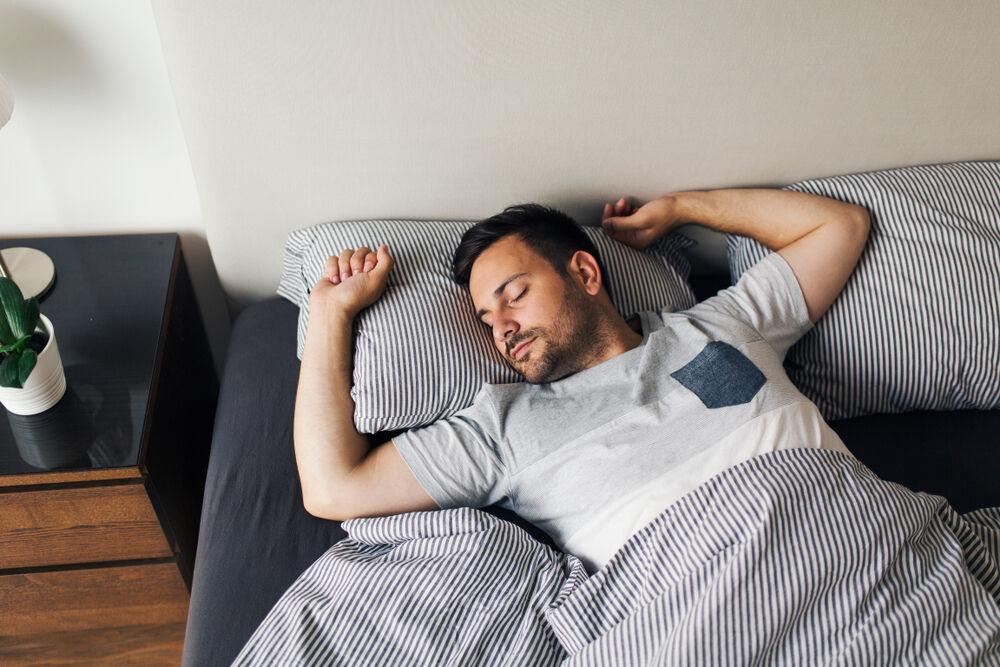Lower back pain is a prevalent issue, impacting daily life and sleep for many people. Choosing the right sleeping position is crucial not only for managing this pain but also for preventing it. In this guide, we'll explore the best sleeping positions to minimize lower back pain and delve into how the right mattress and pillow for back pain, such as those available at Mancini's Sleepworld, can enhance your sleep experience and contribute to spinal health.
Understanding Lower Back Pain
Lower back pain can stem from various causes, each affecting sleep in different ways. Some common causes include acute injuries, chronic conditions such as arthritis, and lifestyle factors like prolonged sitting or poor posture.(1)
Impact on Sleep: Poor sleep can exacerbate lower back pain, creating a cycle of discomfort and sleep disturbances.2 Back pain can make it harder to get comfortable enough to fall asleep or provoke nighttime awakenings.1 Studies reveal that back pain interferes with getting to sleep and staying asleep through the night, and conversely, that lack of restorative sleep increases chronic pain.(2)
Best Sleeping Positions for Lower Back Pain
Selecting the right sleep position can greatly alleviate lower back pain. Here are some of the best sleeping positions for lower back pain.
Fetal Position: This sleep position, especially on the side not experiencing discomfort, can provide significant pain relief for those with herniated discs.
On Your Back with a Pillow Under Knees: This sleep position aids in maintaining the natural curvature of the spine, reducing the strain on the back muscles and ligaments.
Side Sleeping with a Pillow Between Knees: This sleep position helps with spinal alignment and reduces the stress on the hips and lower back.
It's important to note that stomach sleeping is generally not recommended for individuals experiencing lower back pain, as it can lead to neck strain and exaggerated arching of the lower back, causing increased discomfort and potential worsening of the condition.(3)
The Mayo Clinic recommends sleeping on your side with a pillow between your legs to align your spine, pelvis, and hips. Back sleepers should place a pillow under their knees to relax their back muscles and maintain the curve of their lower back. Stomach sleepers should place a pillow under their hips and lower stomach, and use a pillow under their head if it doesn't strain their back.(4)
By choosing the right sleeping position, you can significantly alleviate lower back pain and improve your overall sleep quality.
Additional Tips for Reducing Back Pain During Sleep
Enhancing sleep quality goes beyond just choosing the right position.
Choosing the Right Mattress and Pillow: A mattress that offers the right mix of support and comfort, like those found at Mancini’s Sleepworld, can be a game-changer. Similarly, the right pillow can ensure your neck and spine are aligned, further reducing back pain.
Lifestyle Changes: Incorporating daily stretches and regular breaks from sitting can also have a profound effect on back health and sleep quality.
Practice relaxation techniques: Gentle yoga stretches or other relaxation techniques can help alleviate back pain and improve sleep quality.
Exercise your core: Regular physical activity can improve sleep quality and help ease low back pain.
Address underlying issues: If your lower back pain persists or worsens, consult a healthcare provider for further evaluation and treatment options.
Common Mistakes to Avoid
Certain habits can unintentionally exacerbate back pain.
Wrong Mattress and Pillow: An overly soft mattress or theor too firm or too thin pillow can lead to poor spinal alignment, and worsening back pain. Ideally, the mattress should provide support while conforming to the natural curves of the spine. A medium-firm to firm mattress might be best for most people.
Choosing a pillow that properly supports the head and neck, on the other hand, can help prevent stiffness and pain. Consider the types of pillows that are adjustable or those designed for specific sleeping positions.
Sleeping on the Stomach: As previously mentioned, this position often leads to neck and lower back strain. If it's hard to avoid, placing even just a small pillow under the pelvis can help maintain natural spinal alignment.
Sleeping on your side with a pillow between your knees is more ideal as it can help maintain proper hip and spinal alignment, while placing a pillow under your knees and possibly another behind your lower back as you sleep on your back can improve comfort and alignment.
Inconsistent Sleep Schedule: Not getting enough sleep can leave you feeling fatigued and depleted, making your back pain worse. Inconsistent sleep can elevate cortisol levels, further contributing to muscle tension and pain.
Frequent waking and fragmented sleep also don't allow your body to fully repair and recover, increasing pain sensitivity. If you're struggling to adjust your sleep schedule or your back pain persists, consult a doctor or sleep specialist.
Indeed, the journey to alleviating lower back pain is multifaceted, involving the right sleeping positions, mattress, and pillow. Explore the range of supportive bedding options at Mancini’s Sleepworld to find your ideal match. With the right approach, you can improve your sleep quality and wake up with less back pain, ready to tackle the day. Remember, small changes in how you sleep can make a significant difference in your overall comfort and health.
Sources:
1. NewYork-Presbyterian. Tips to Reduce Sleep-Related Back Pain. https://healthmatters.nyp.org/tips-to-reduce-sleep-. related-back-pain/
2. Spine-health. How Back Pain Affects Sleep. https://www.spine-health.com/wellness/sleep/how-back-pain-affects-sleep
3. UCF Health Services. The Best Sleeping Position for Lower Back Pain (And The Worst). https://ucfhealth.com/our-services/lifestyle-medicine/best-sleeping-position-for-lower-back-pain/
4. Mayo Clinic. Sleeping positions that reduce back pain. https://www.mayoclinic.org/diseases-conditions/back-pain/in-depth/sleeping-positions/art-20546852

